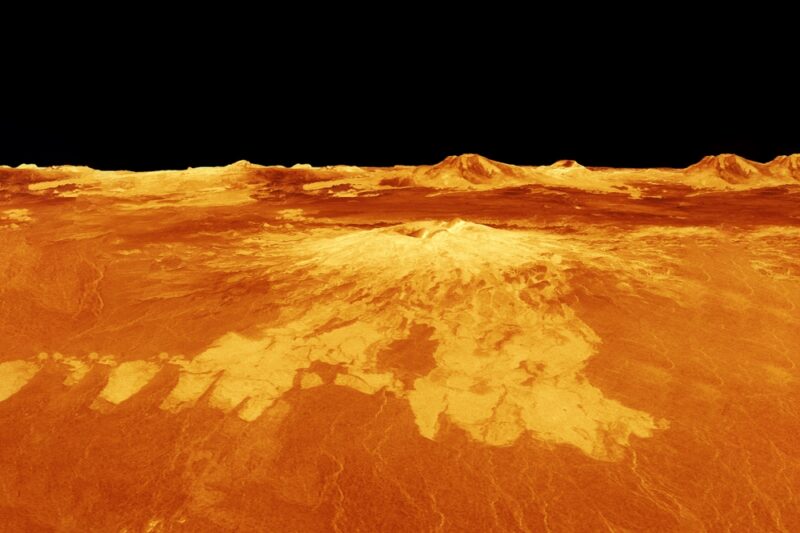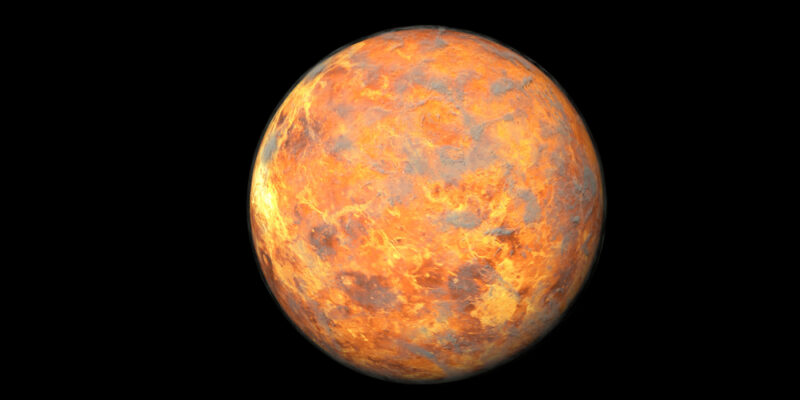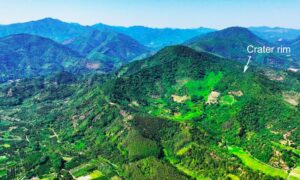Giant underground lava tunnels have been discovered on Venus, our inhospitable, cloud-wrapped neighbor. Their huge size is peculiar and has forced scientists to discard their pet theories on how planetary lava tunnels form.
The surface of Venus is unlike Earth’s in nearly every respect. Those thick clouds that hide a direct view of its surface are made of sulfuric acid. The planet’s temperature is around 460˚C, its atmospheric pressure is 93 times higher than ours, and it has more volcanoes than any other planet.
With these hellish conditions, you might think huge lava tunnels tie in quite nicely, but their size has baffled scientists. Lava tubes on Earth form when the outer layer of lava flowing beneath the surface cools and solidifies, while the interior remains molten. The molten lava continues to drain away, leaving behind a hollow underground channel. Our lava tubes are relatively modest in size because Earth’s gravity pulls heavily on the overlying rock.
On the Moon and Mars, the lower gravity has allowed lava tubes to grow larger without collapsing. The assumption has long been that weaker gravity results in larger lava tubes. So the discovery of huge lava tunnels on Venus, where the gravity is quite similar to Earth’s, turns that rule completely on its head.
“Earth lava tubes have smaller volumes, Mars tubes have slightly bigger volumes, the Moon’s tubes have even bigger volumes…and then there’s Venus, completely disrupting this trend, displaying very, very big tube volumes,” lead author Barbara De Toffoli told the Europlanet Science Congress earlier this month. “There’s likely something more on Venus playing a significant role.”

The hostile surface of Venus. Elements of this image furnished by NASA. Image: Shutterstock
Lava tubes leave surface hints
Scientists have long suspected the existence of lava tubes on Venus. Pits on the surface indicated they might exist. De Toffoli and her team discovered the unusual tunnels using radar imagery and mapping data from past Venus missions. They analyzed the surface pits and depressions near volcanoes and noticed patterns characteristic of collapsed sections of lava tubes.
Many of the pits also line up perfectly with the steepest section of volcano slopes where lava would have flowed, and the ratio of depth to width is consistent with the geometry of collapsed tubes.
Why these tunnels are so large remains a mystery. The leading theory relates to Venus’s surface hellscape. The crushing pressure and extreme temperatures might cause lava to flow and solidify differently than elsewhere.
“Due to the very high pressure, there’s an overall flattening out of the tubes, instead of having a very intense erosion at the floor that usually happens on other planets,” suggests De Toffolii.
Shelter from radiation
On the Moon and Mars, scientists have been eyeing the lava tubes as shelters for future missions. They serve as natural shields against radiation and harsh surface extremes. On Venus, surface missions are even more challenging due to the brutal heat and pressure. But these underground tunnels might someday offer some refuge for rovers and robotic probes. However, before anything like that can happen, we need to learn more about the lava tubes.
Future missions like ESA’s EnVision, scheduled to launch in 2031, will map the vast tunnels. The project will also have a subsurface radar sounder to detect the hidden cavities hundreds of meters underground. This should let scientists confirm the depth and geometry of the lava tunnels.






